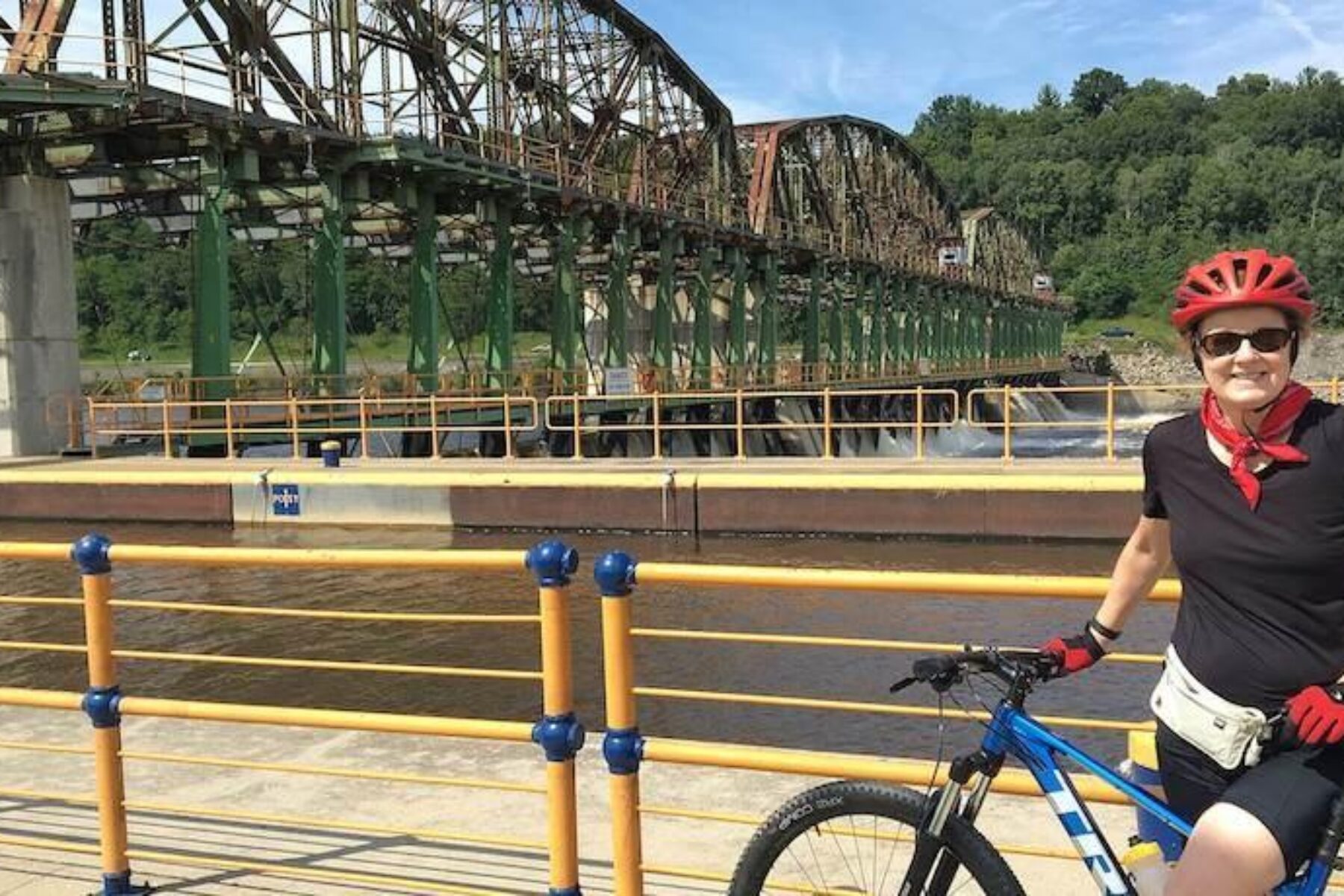Erie Canalway Trail, New York

Trail of the Month: October 2012
President Thomas Jefferson once said the idea for the Erie Canal was a “little short of madness,” yet when it first opened in 1825, the waterway was deemed the “Eighth Wonder of the World.” It’s no wonder, as constructing a water route spanning the entire state of New York—using nothing but human and animal power—required a staggering feat of engineering. Today, the Erie Canalway Trail, which traces the canal’s route for nearly 365 miles from Buffalo to the state capital in Albany, stands to be one of the longest multi-use trails in the nation when it’s completed.
“The idea for the canal was so huge and successful, it coalesced into this concept of what it means to be American,” says Jean Mackay, director of communications and outreach for the Erie Canalway National Heritage Corridor. “That ‘can do spirit’—a lot of that came together with the building of the Erie Canal.”
A critical component of the waterway was its passage through the Mohawk Valley, a natural break in the mountains that separated the busy Eastern Seaboard with the country’s developing interior. With the Adirondacks to the north and the Catskills to the south, this eastern section of the trail is one of its most picturesque. Rome, one of the valley’s most prominent cities, is where ground was first broken for the canal in 1817. A popular stop here is Fort Stanwix, where you’ll find American Revolution-era costumed guides who provide a glimpse of life in the 18th century.
“Without the canal, New York would not be what it is today,” says Mackay. “Because of the canal, goods, people and information were able to travel west. It opened up the western part of the country.”
For a firsthand look at this engineering marvel in upstate New York, be sure to stop in Lockport, just outside of Buffalo on the western end of the trail. To accommodate the 600-foot elevation change from one end of the canal to the other, dozens of locks were built along the waterway. In the city’s famous “flight of five,” you’ll have the unique opportunity to see one of the few remaining original locks alongside a modern working lock.
Another unforgettable sight is watching one of the lift bridges raise and lower to accommodate the passage of a boat. Many of these low bridges can be found in the central part of the trail in the Rochester area. The bridges, which are just a few feet above the water, required passengers to duck as memorialized in the popular folksong, “Low Bridge, Everybody Down,” written in 1905.
“When you do the trail, it’s a gateway to history,” says Robin Dropkin, executive director for Parks & Trails New York. “You can’t go for more than a couple of miles without encountering a historic site. This was the mother of all canals in this country.”
When the canal was being built, railroads were just coming into vogue. The Mohawk and Hudson, New York’s first railroad, opened in 1831 and ran from Albany to Schenectady. At first, the railroads were seen as competition for the precious canal, so the state’s lawmakers only permitted trains to carry freight during the winter when the canal was closed. But this restriction was soon lifted and, by the late 1800s, trains had clearly won the battle of transportation supremacy. About a third of the Erie Canalway Trail (more than 100 miles) is built on these former railways, largely consisting of the West Shore Line on the trail’s eastern end.
For those interested in learning more of the corridor’s history, two of the many museums along the route are standouts: the Erie Canal Museum in Syracuse and the Chittenango Landing Canal Boat Museum east of the city in Chittenango.
In 2000, this richness of historical attractions prompted Congress to formally recognize the Erie Canal as a National Heritage Corridor. More than a decade later, the canal will play an important role in Governor Andrew Cuomo’s newly unveiled “Path Through History” initiative to promote tourism and economic growth in the state.
“The New York canal system generates $380 million a year in direct tourism spending,” says Brian U. Stratton, director of the New York State Canal Corporation, which operates and maintains the trail. “It’s a tremendous economic generator for the communities along the way.”
This fact is not lost on Parks & Trails New York. For the last few years, the organization has run a “Bicyclists Bring Business” program to help encourage the communities along the trail to become more attractive to trail-goers. This year, the organization launched its first economic impact study on the trail that will soon yield data on how the program and other efforts to promote the trail are working.
“The quintessential canal experience is the port communities that have the closest tie to the canal,” says Martin Daley, project director for Parks & Trails New York. “When people think of the canal and the living classroom that it is, that’s what they’re thinking of.”
Other efforts—in fact, the major effort—for the trail is addressing the gaps in the corridor. Although most (75 percent) of the trail is complete, one can’t currently travel the entire route without some exposure to on-road sections. While most of these gaps are easily navigable with distinct signage and road markings, “one of our largest initiatives is to close all the gaps,” says Stratton. “We made great progress over the summer, announcing about 10 miles of gap closures under way.”
The trail, first envisioned in the 1970s, has come a long way, especially with the renewed efforts stemming from the updated New York State Canal Recreationway Plan in 1995. The largest new piece will connect the cities of Amherst and Lockport in western New York to one of the trail’s most heavily used sections to create a continuous off-road trail spanning more than 100 miles. Construction of the eight-mile segment is expected to begin next fall.
Those who want to experience the full trail, but who might feel daunted by such an undertaking, can take heart. The Cycling the Erie Canal bike tour is offered by Parks & Trails New York every summer for all ability levels. This year, about 500 cyclists joined the tour, which lasts eight days, with 35 to 60 miles of riding each day, and tent camping at night.
“I was amazed by the age range,” says Stratton of the bike tour. “The youngest rider was about 8, and the oldest rider was about 82 or 84. There was even a blind rider on the back of a tandem bicycle. They come because of what a living legend the Erie Canal is. “
But if you can’t wait until next summer to get out there, now is the perfect time to go. The eastern half of the trail, with the Mohawk Valley’s dense woodlands and rolling hills, offers the perfect place for leaf peeping. To plan a visit, you’ll find updated statewide fall foliage reports on the I Love NY website. The western half of the trail is more rural with its cornfields and apple and peach orchards, offering a different yet equally memorable bounty of autumnal beauty.

Donate
Everyone deserves access to safe ways to walk, bike, and be active outdoors.



